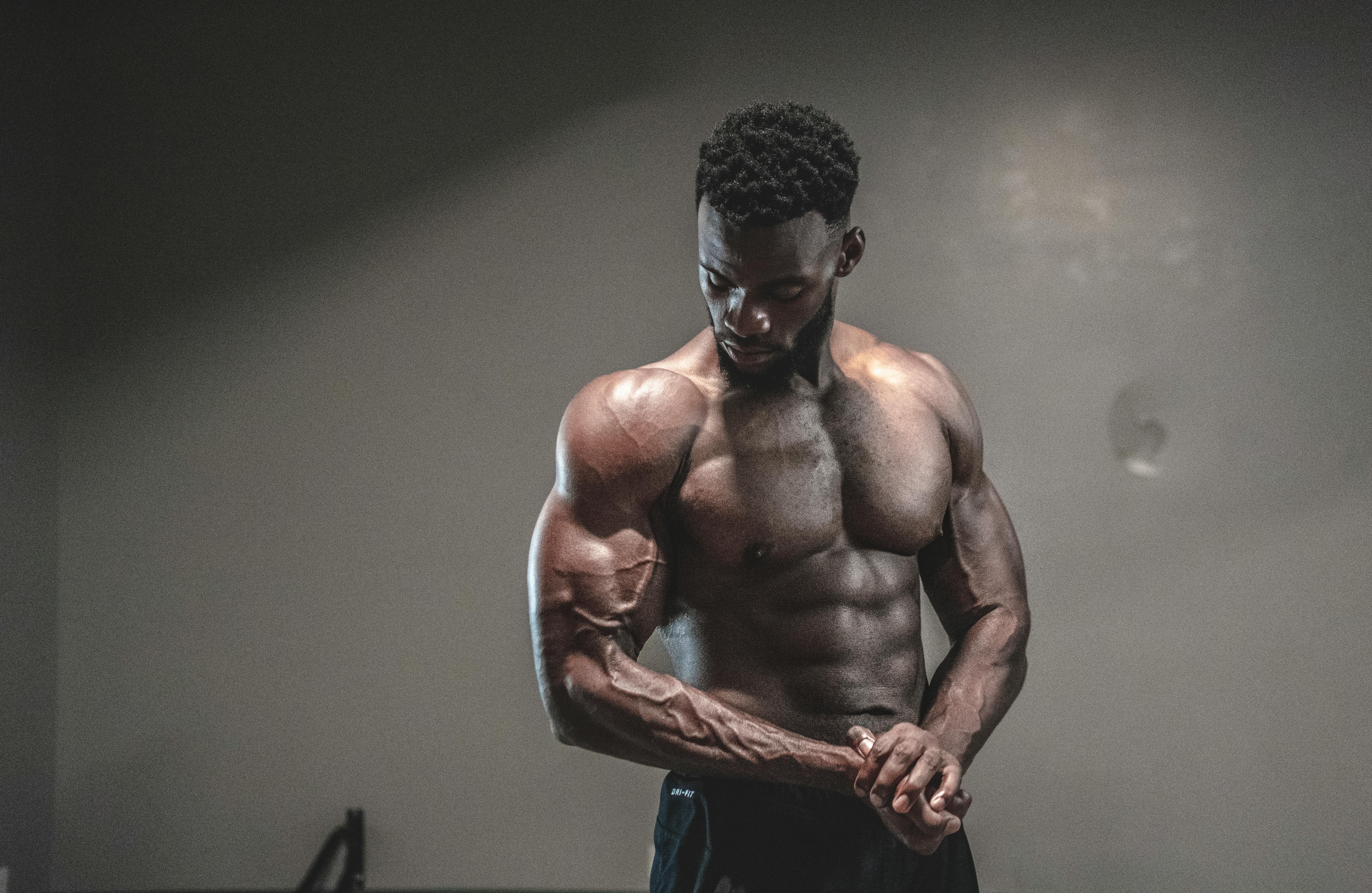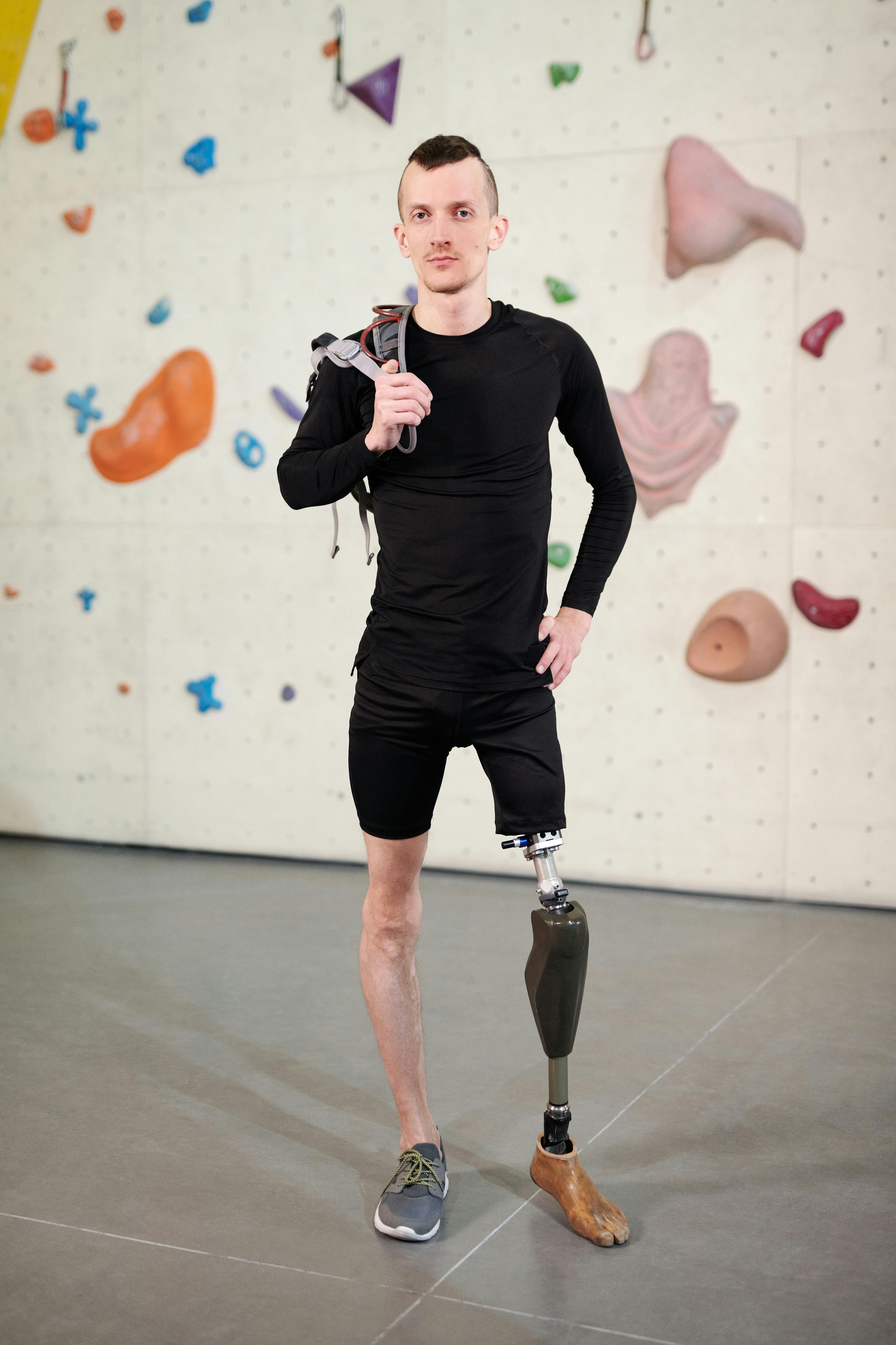How To Use The Squat Machine At The Gym
Have you ever seen a big, mysterious machine at the gym and wondered how to use it? Well, today we’re going to talk about one of those machines called the squat machine. It’s a special machine that can help you strengthen your legs and make them super strong! In this article, we’ll learn how to set up the squat machine and how to use it properly so you can become a squatting pro at the gym!

Setting Up the Squat Machine
Adjusting the Seat Position
To properly set up the squat machine, start by adjusting the seat position. You want the seat to be at a height where your feet can comfortably reach the foot platform. Make sure your knees are bent at a 90-degree angle when your feet are placed on the platform. This will ensure that you can perform the exercise with proper form and technique.
Adjusting the Backrest Position
Next, adjust the backrest of the squat machine to a position that feels comfortable for you. The backrest provides support for your lower back during the exercise, so it’s important to find a position that allows you to maintain a neutral spine throughout the movement. Adjust the backrest until you feel supported and secure.
Setting the Foot Platform
After adjusting the seat and backrest, it’s time to set the foot platform. The foot platform is where you will place your feet during the squat exercise. Make sure the foot platform is aligned with your feet and that it is stable and secure. You don’t want your feet to slip or slide during the exercise, as this can lead to injury or improper form.
Adjusting the Weight
Lastly, adjust the weight on the squat machine to a level that is appropriate for your fitness level and goals. Start with a lighter weight if you’re new to squatting or if you’re unsure of your strength. Gradually increase the weight as you become more comfortable and confident with the exercise. It’s always better to start with lighter weights and work your way up to heavier ones to prevent injury and promote proper form.
Preparing for the Exercise
Choosing the Right Weight
Before starting the squat exercise, it’s important to choose the right weight for your workout. The weight you select should challenge you but still allow you to maintain proper form throughout the movement. It’s better to start with a lighter weight and perfect your form before increasing the weight. Remember, it’s not about how much weight you can lift, but how well you can perform the exercise.
Warming Up
Before jumping into the squat exercise, take a few minutes to warm up your muscles and get your body ready for the workout. You can warm up by doing some light cardio, such as jogging or cycling, or by performing dynamic stretches like leg swings or lunges. Warming up helps increase blood flow to your muscles, making them more flexible and less prone to injury.
Proper Form and Technique
To perform squats correctly, it’s important to maintain proper form and technique. Start with your feet hip-width apart and toes pointing slightly outward. Keep your chest lifted, shoulders back, and engage your core. Lower your body by bending at the knees and hips, as if sitting back into a chair. Your knees should track over your toes, and your weight should be on your heels. Push through your heels to stand back up, squeezing your glutes at the top.
Safety Precautions
Safety should always be a priority when using the squat machine. Make sure the machine is in good working condition before using it. If you notice any loose or broken parts, notify gym staff right away. Additionally, start with a weight that is manageable for you and gradually increase it as you become stronger. If you experience any pain or discomfort during the exercise, stop immediately and seek guidance from a certified trainer or healthcare professional.

Performing the Squat
Positioning Your Feet
To perform squats on the machine, start by positioning your feet on the foot platform. Your feet should be shoulder-width apart or slightly wider, depending on your preference. Keep your toes pointing slightly outward to engage your glutes and prevent knee strain. Finding the right foot position may take some trial and error, so don’t hesitate to adjust until it feels comfortable for you.
Gripping the Handles
While performing squats on the machine, you can hold onto the handles provided for stability and support. Grip the handles firmly, but avoid pulling or putting excessive pressure on them. They are there to assist you in maintaining balance, especially when performing heavier squats. If you feel unstable at any point during the exercise, use the handles to steady yourself.
Initiating the Movement
To begin the squat, engage your core and take a deep breath. Press through your heels and push your hips back as you bend your knees. Imagine sitting back into an imaginary chair. Make sure to keep your chest lifted and your back straight throughout the movement. Lower your body until your thighs are parallel to the floor or slightly below, ensuring your knees do not go past your toes.
Descending into the Squat
As you descend into the squat, maintain proper form and control. Focus on keeping your weight on your heels rather than your toes. This will help engage your glutes and hamstrings, and prevent excessive strain on your knees. Keep your chest lifted and avoid rounding your back. The descent should be slow and controlled, allowing your muscles to fully engage and work throughout the movement.
Coming Up from the Squat
To come up from the squat, press through your heels and engage your glutes and quadriceps. Exhale as you push yourself back up to the starting position. Make sure to maintain proper form and keep your knees tracking over your toes. The ascent should be smooth and controlled, with your movements driven by your leg muscles. Repeat for the desired number of repetitions or as recommended by your workout plan.
Variations of the Squat Exercise
Narrow Stance Squat
The narrow stance squat is a variation of the squat exercise where you position your feet closer together. This variation targets your quadriceps more intensely, making it a great choice if you want to focus on developing strong leg muscles. The narrow stance squat also engages your core and helps improve balance and stability.
Wide Stance Squat
In contrast to the narrow stance squat, the wide stance squat involves placing your feet wider apart. This variation primarily targets your inner thighs and glutes, making it an excellent choice for building lower body strength and stability. The wide stance squat also helps improve hip mobility and flexibility.
Sumo Squat
The sumo squat gets its name from the wide stance and turned-out foot position, resembling a sumo wrestler’s stance. This variation targets your glutes, inner thighs, and quadriceps. The sumo squat is a great exercise for building lower body strength and stability, as well as improving hip mobility and flexibility.
Explosive Squat
The explosive squat, also known as the jump squat, adds an element of power and explosiveness to the exercise. To perform this variation, lower yourself into the squat position and then explode upward, jumping off the ground. Land softly back into the squat position and repeat. The explosive squat helps build leg power, improves cardiovascular fitness, and can be a fun way to mix up your workout routine.

Mistakes to Avoid
Leaning Too Far Forward
One common mistake when performing squats is leaning too far forward. This can put excessive strain on your lower back and knees, leading to injury. To avoid this, focus on keeping your chest lifted and your back straight throughout the movement. Imagine a string pulling your head up towards the ceiling to help maintain proper alignment.
Not Going Low Enough
Not going low enough during squats is another mistake many people make. It’s important to lower your body until your thighs are parallel to the floor, or slightly below. This ensures full engagement of your leg muscles and helps build strength and stability. However, be mindful not to go too low, as this can put unnecessary strain on your knees. Find a comfortable range of motion that allows you to maintain proper form.
Speeding Through the Movement
Performing squats too quickly is a common mistake that reduces the effectiveness of the exercise. Speeding through the movement not only compromises your form but also decreases the time your muscles have to engage and work. Focus on performing squats in a slow and controlled manner, allowing your muscles to fully extend and contract with each repetition.
Rounding the Back
Another mistake to avoid is rounding your back during squats. This can lead to back strain and injury. Instead, focus on keeping a neutral spine throughout the movement. Engage your core muscles and imagine a straight line from the top of your head to your tailbone. By maintaining a neutral spine, you’ll distribute the load evenly and protect your back.
Tips for Optimizing Your Squat
Maintaining a Neutral Spine
Maintaining a neutral spine is crucial for optimizing your squat. A neutral spine means keeping your back straight and aligned from the top of your head to your tailbone. This helps distribute the load evenly and prevents strain on your back and other joints. Engage your core muscles and imagine a straight line throughout the movement.
Engaging Core and Glutes
Engaging your core and glutes during squats helps stabilize your body and maintain proper form. Before starting the exercise, take a deep breath and brace your core as if preparing for a gentle punch to the stomach. Squeeze your glutes throughout the movement to maximize the activation of your leg muscles and promote stability.
Breathing Techniques
Proper breathing techniques can make a significant difference in your squat performance. Take a deep breath before descending into the squat, and exhale as you come up. This helps stabilize your body and provides support for your core and back muscles. Remember to breathe consistently and avoid holding your breath during the movement.
Using Mirrors for Form Check
Using mirrors can be a helpful tool for checking your form during squats. Position yourself in front of a mirror, if available, and observe your body alignment as you perform the exercise. Pay attention to your back position, knee tracking, and foot placement. Adjust as needed to ensure you’re maintaining proper form and technique.
Incorporating the Squat Machine into Your Workout
Including Squats in Leg Day
Squats are an excellent exercise to include in your leg day workout routine. They target multiple muscle groups in your lower body, including your quadriceps, hamstrings, glutes, and calves. By incorporating squats into your leg day routine, you can effectively strengthen and tone your leg muscles, improve overall lower body strength, and enhance athletic performance.
Supersetting with Other Exercises
Supersetting involves performing two exercises back-to-back with little to no rest in between. You can superset squats with other lower body exercises to maximize your workout. For example, you can perform a set of squats followed immediately by a set of lunges or leg curls. This alternating pattern keeps your muscles engaged, boosts calorie burn, and adds variety to your routine.
Progressive Overload for Strength Gains
To continue making progress with your squat machine workouts, it’s essential to incorporate progressive overload. Progressive overload means gradually increasing the weight or intensity of your workouts over time. This challenges your muscles and forces them to adapt and grow stronger. Add a small amount of weight to the squat machine as you become comfortable with your current weight, and continue to challenge yourself as you progress.
Common Questions and Concerns
Can Squats Be Harmful for Knee Joints?
When performed with proper form and technique, squats are generally safe for the knee joints. However, if you have a pre-existing knee condition or injury, it’s essential to consult with a healthcare professional or a certified trainer before attempting squats. They can assess your situation and provide modifications or alternative exercises to protect your knee joints.
Should I Use the Squat Machine or Free Weights?
Both the squat machine and free weights, such as barbells or dumbbells, can be effective for performing squats. The choice depends on your goals, preferences, and available equipment. The squat machine provides stability and support, making it a good option for beginners or those who prefer added assistance. Free weights, on the other hand, allow for a more natural range of motion and engage additional stabilizing muscles.
Is It Okay to Lock the Knees at the Top of the Squat?
Locking your knees at the top of the squat is generally not recommended. Locking the knees can strain the joint and potentially lead to injury. Instead, as you come up from the squat, keep a slight bend in your knees to maintain tension in your leg muscles. This helps protect your joints and promotes proper form throughout the exercise.
Alternatives to the Squat Machine
Barbell Squats
Barbell squats are a popular alternative to the squat machine. With barbell squats, you use a weighted barbell placed across your upper back and shoulders as you perform the squat. This variation engages more stabilizing muscles and allows for a greater range of motion. Barbell squats can be challenging but are highly effective for building lower body strength and overall muscle development.
Dumbbell Squats
Dumbbell squats involve using dumbbells held at your sides instead of a machine or barbell. This variation allows for greater freedom of movement and works your upper body muscles as well. Dumbbell squats are a versatile option that can be performed at home or in the gym and are suitable for all fitness levels.
Goblet Squats
Goblet squats are a beginner-friendly squat variation that focuses on mobility and proper form. Hold a kettlebell or dumbbell in front of your chest, close to your body, while performing the squat. The goblet squat helps improve hip mobility, core stability, and overall squat mechanics. It’s an excellent option for beginners or those recovering from injuries.
Leg Press Machine
The leg press machine is another alternative to the squat machine. It targets similar muscle groups as the squat but provides additional back support. The leg press allows you to adjust the weight and foot position, making it suitable for various fitness levels. Incorporating the leg press machine into your workout routine can help build leg strength, muscle endurance, and power.
Conclusion
Using the squat machine at the gym can be a great way to strengthen your lower body muscles, improve stability, and enhance overall fitness. By properly setting up the machine, preparing your body for the exercise, using correct form and technique, and avoiding common mistakes, you can optimize your squat workouts. Don’t forget to consider variations of the squat exercise, incorporate safety precautions, and explore alternatives to the squat machine to keep your workouts challenging and enjoyable. With consistency and proper guidance, you can safely and effectively incorporate squats into your fitness routine and reap the many benefits they have to offer. Happy squatting!


Pingback: Squat Machine Gym How To Use